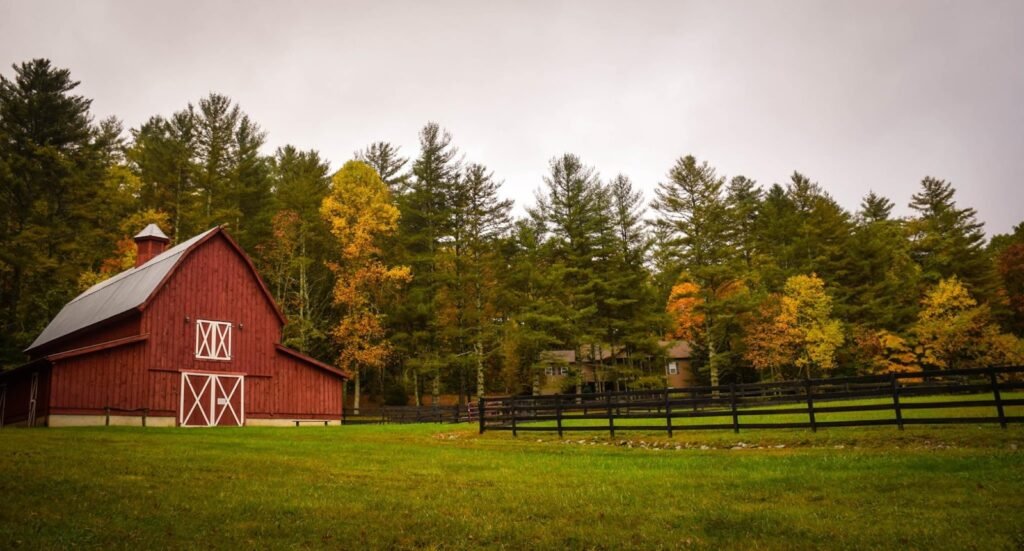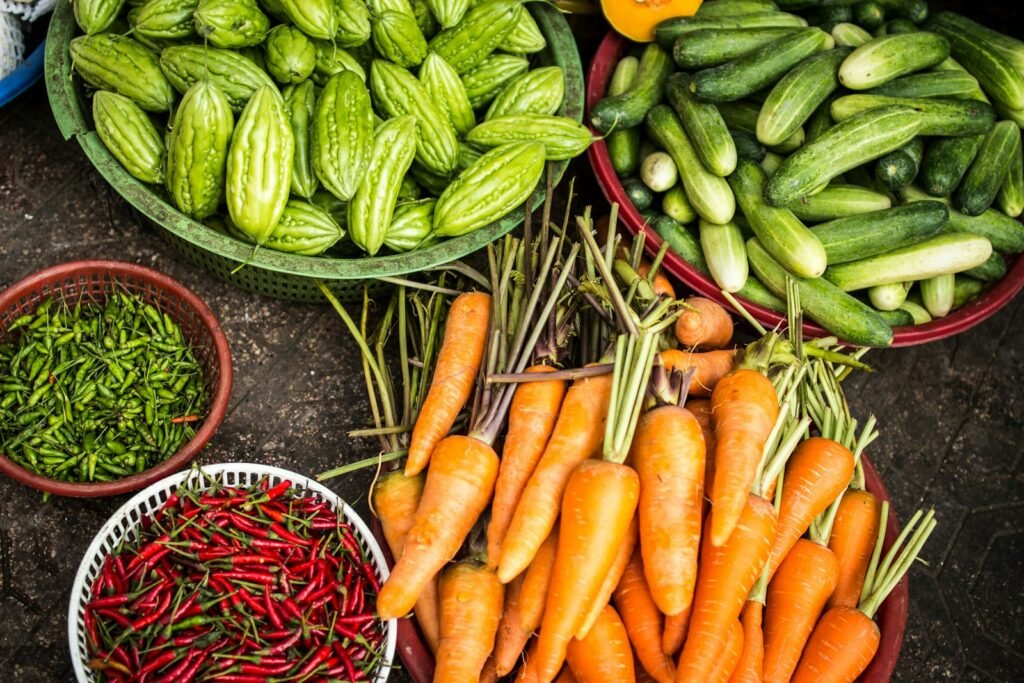Understanding Seasonal Promotions & Commerce
Ever wondered about the hype surrounding seasonal promotions, campaigns, and selling in commerce?
Or questioned when the best season is for a Farmers Market?
If so, you’ve landed in the right place.
In this article, we’ll unravel these concepts, helping you understand why they are vital in driving business success.
Our discussion will start by examining seasonal promotions, their importance, and types. I’ll also share some effective strategies for seasonal promotions, along with tangible examples and best practices to make your promotions successful.
Next, we’ll focus on seasonal campaigns and how they can spark customer interest. You’ll see the steps needed to create a successful campaign while learning the differences between a seasonal campaign and seasonal promotion.
Lastly, we’ll turn our attention to Farmers Markets, discussing the best seasons for these and why. Different seasons bring different opportunities, so tune in for some fresh ideas.
So, are you ready to tap into the power of seasonality? Here’s a cheerful ‘ho-ho-ho!’ to fruitful festive sales.
Let’s get started!
Table of Contents
Understanding Seasonal Promotions
What Are Seasonal Promotions?
Seasonal promotions are marketing strategies tied to specific seasons or holidays. They aim to boost sales by leveraging the seasonal demand.
These promotions often revolve around special discounts, offers, or seasonal product bundles.
Why Seasonal Promotions Matter
Seasonal promotions tap into customer behavior patterns. People are more likely to spend during certain times of the year.
- Increases brand visibility
- Boosts customer engagement
- Drives higher sales
Types of Seasonal Promotions
Different types of seasonal promotions cater to various times of the year.
- Holiday Sales – Christmas, Thanksgiving, Easter
- Seasonal Events – Back-to-School, Summer Sales
- End-of-Season – Clearance sales for winter, summer
- National & Cultural Celebrations – 4th of July, Halloween, Black Friday
Benefits of Seasonal Promotions
Seasonal promotions provide several benefits for retailers. Here’s why they are popular:
| Benefits | Details |
|---|---|
| Boosts Sales | Seasonal discounts drive higher sales volumes. |
| Clears Inventory | Moves old stock to make room for new items. |
| Increases Customer Loyalty | Exclusive offers build a loyal customer base. |
Key Strategies for Effective Seasonal Promotions
To make the most out of seasonal promotions, follow these strategies:
- Plan Ahead – Start planning months in advance.
- Target Marketing – Use customer data to tailor promotions.
- Create Urgency – Limited-time offers create a sense of urgency.
- Bundling Products – Offer bundled deals for better value.
Examples of Seasonal Promotions
Some well-known examples of successful seasonal promotions include:
- Black Friday Sales – Deep discounts on various products.
- Back-to-School Campaigns – Offers on school supplies and clothing.
- Valentine’s Day Deals – Promotions on gifts, chocolates, and flowers.
Best Practices
Here are some best practices to make your seasonal promotions successful:
- Know Your Audience – Understand customer preferences for better targeting.
- Leverage Social Media – Use platforms like Facebook, Instagram for promotion.
- Offer Free Shipping – Attract more buyers with free shipping options.
- Analyze and Optimize – Track performance and tweak accordingly.
Tools and Resources
Several tools can aid in managing seasonal promotions. Some popular ones include:
- Email Marketing Tools – Mailchimp, Constant Contact
- Social Media Management – Hootsuite, Buffer
- Data Analytics – Google Analytics
For more detailed guidance on running successful promotions, you can visit Shopify’s promotional strategies blog.
This provides expert tips on how to maximize the impact of your seasonal sales.
Implementing an Effective Seasonal Campaign

Understanding the Concept of a Seasonal Campaign
A seasonal campaign is a form of seasonal promotion that leverages the cultural, behavioral, or weather-related characteristics of a particular time frame to increase interest in a product or service. Just like seasonal promotions, these campaigns are centered on holidays, significant dates, or seasonal activities and preferences. The primary purpose of a seasonal campaign is to attract customers by associating a product or service with the season and spark the consumer’s interest.
Aspects of a Successful Seasonal Campaign
Executing a successful seasonal campaign involves a number of important factors. These include:
- Timeliness – Timing is everything. You need to start your campaign ahead of the season or holiday to gain maximum impact.
- Relevance – Ensure the products or services you are promoting are relevant to the season or holiday.
- Creativity – Stand out from the crowd with unique and appealing marketing messages.
Seasonal Campaign vs Seasonal Promotion: The Difference
While there are similarities between a seasonal campaign and a seasonal promotion, they each serve a different purpose.
| Term | Description |
|---|---|
| Seasonal Campaign | A prolonged strategy that includes a series of related marketing activities such as email marketing, social media posts, or advertisements. |
| Seasonal Promotion | Mostly limited to discounts, offers, or product bundles that are available for a restricted period. |
Creating a Seasonal Campaign: A Step-by-Step Guide
To create a highly effective seasonal campaign, follow these key steps:
- Predetermine Your Goal – Before the campaign, determine what you hope to achieve: increased traffic, high conversion rate, etc.
- Choose the Right Platform – Select the most impactful platforms for your message based on your audience’s behavior.
- Develop a Strong Message – This could be a theme that runs throughout the campaign.
- Monitor the Campaign – Constantly review the performance of the campaign and make necessary adjustments.
Seasonal Campaign Examples to Learn From
Learning from successful campaigns can provide valuable insights and inspiration:
- Starbucks Pumpkin Spice Latte – An iconic example of a successful seasonal campaign. The brand has cultivated a massive following around this seasonal beverage.
- REI’s #OptOutside – An anti-Black Friday campaign where REI closes its stores and pays employees to spend the day outdoors, promoting the brand’s love for nature.
Seasonal Campaign Management Tools
Just like seasonal promotions, there are valuable tools that aid in more effective campaign management:
- Project Management Tools – Applications like Asana, Trello can organize and track tasks during the campaign.
- Ad Management Tools – Facebook Ads Manager, Google Ads help you create, monitor, and optimize ad campaigns.
If you’re interested in deeper insights for successfully running seasonal campaigns, I recommend checking HubSpot’s marketing blog. It has comprehensive resources that can help improve your campaign execution.
What is Seasonal Selling?
Defining Seasonal Selling
Seasonal selling refers to businesses aligning their products or services to coincide with specific seasons, holidays, or cultural events. This strategy capitalizes on the recurring consumer behaviors and heightened demand typical during these periods.
Why Seasonal Selling is Important
Seasonal selling is essential because it allows businesses to:
- Maximize Sales Potential – Higher consumer spending during peak seasons can translate to increased revenue.
- Capitalize on Trends – Trends and consumer needs can vary with the seasons, allowing businesses to offer timely products or services.
- Enhance Customer Relationships – Providing relevant solutions during key times of the year builds trust and loyalty.
How to Identify Seasonal Sales Opportunities
To make the most out of seasonal selling, businesses should:
- Review Sales Data – Analyze historical sales data to identify trends and peak periods of demand.
- Monitor Market Trends – Stay informed about industry trends and consumer behavior shifts that could impact sales.
- Engage with Customers – Regularly seek feedback and engage with customers to understand their seasonal needs and preferences.
Seasonal Selling Examples
Consider these examples to see how businesses leverage seasonal selling effectively:
- Fashion and Clothing – Launching new collections for summer, fall, winter, and spring.
- Electronics – Promoting gadgets and tech during back-to-school sales or holiday seasons.
- Food and Beverages – Introducing limited-edition seasonal flavors or holiday-themed packaging.
Key Components for Successful Seasonal Selling
Successful seasonal selling involves several key elements:
- Timely Product Launches – Ensure products are ready and available before the peak season begins.
- Targeted Marketing Campaigns – Create marketing campaigns that resonate with the specific season or holiday.
- Attractive Pricing – Offer special pricing, discounts, or promotions that entice customers to make a purchase.
Tools for Enhancing Seasonal Selling
Leveraging the right tools can optimize your seasonal selling efforts:
- Customer Relationship Management (CRM) – Tools like Salesforce or HubSpot aid in managing customer interactions and identifying seasonal buying patterns.
- E-commerce Platforms – Websites like Shopify and BigCommerce offer features to manage seasonal sales and promotions.
- Inventory Management – Tools such as TradeGecko or Cin7 help maintain optimal inventory levels to meet seasonal demand.
For a comprehensive guide on effective selling strategies, consider reading more on BigCommerce’s blog on seasonal selling.
What Season is Best for Farmers Market?

Optimal Seasons for Farmers Markets
When it comes to choosing the best season for farmers markets, understanding the cycles of produce and consumer behavior is key. The growing seasons largely dictate the availability of various fruits and vegetables, which affects the timing of farmers markets.
Spring: The Beginning of Market Season
Spring is often the kickoff of the farmers market season. It’s when the first fresh produce of the year starts to appear. Here’s why spring is a significant season:
- Early Harvest – Greens like lettuce, spinach, and asparagus come into season.
- Consumer Excitement – Shoppers are eager for fresh, local produce after winter.
- Plant Sales – Many markets also feature plant starts for gardeners.
Summer: Peak Season for Variety and Volume
Summer is the pinnacle for farmers markets due to the abundance of produce. This season sees the highest traffic and sales. Key points include:
- Wide Variety – Tomatoes, corn, berries, and peaches are in full swing.
- Extended Hours – Many markets operate longer hours or additional days.
- Special Events – Markets often hold festivals and live music to attract crowds.
Fall: End-of-Season Abundance
Fall continues to provide a bounty of fresh produce and marks the winding down of the market season. Highlights of fall markets include:
- Seasonal Favorites – Pumpkins, apples, and squash dominate this season.
- Preservation and Storage – Consumers stock up for winter canning and storage.
- Holiday Preparations – Many shoppers buy for Thanksgiving and other fall holidays.
Winter: The Off-Peak Season
While many farmers markets close during the winter, some remain open. These markets usually offer:
- Root Vegetables – Items like potatoes, carrots, and beets are common.
- Greenhouse Produce – Greens and herbs grown in greenhouses extend availability.
- Artisanal Goods – Baked goods, jams, and crafts often fill market stalls.
Considerations for Vendors and Shoppers
Deciding the best season involves considering both vendor logistics and shopper preferences. Here are some factors to weigh:
- Crop Cycles – Align market schedules with the natural growing seasons.
- Customer Demand – Track which seasons see the highest foot traffic.
- Weather – Weather conditions can impact both the supply of goods and market attendance.
- Competition – Compare market schedules in the area to avoid overlapping.
For more insights on making the most of farmers markets in different seasons, check out Farmers Market Institute.
Seasonal Marketing: Insight, Impact and Implementation
In this article, we’ve explored the key components of seasonal promotions, seasonal campaigns, and seasonal selling. Seasonal promotions serve to capitalize on increased demand during certain times of year, helping brands boost visibility, engagement, and sales.
Using various tactics such as holiday sales, seasonal events, and special offers during national celebrations, these promotions encourage higher volumes of sales, clear inventory, and enhance customer loyalty.
We’ve also dissected how a seasonal campaign differs from separate promotions, as it entails a prolonged strategy with related marketing activities. Finally, we examined seasonal selling, uncovering how businesses maximize sales potential by aligning their offerings with seasons or holidays. From fashion and clothing to food and beverage industries, seasonal selling allows businesses to enhance customer relationships through timely offerings.
A key point across all these strategies is the importance of using tools and resources, such as Customer Relationship Management tools, e-commerce platforms, or inventory management software, to enhance strategy effectiveness.
Understanding your audience and knowing when to strike is key when seeking to make the most of seasonal trends.
Frequently Asked Questions – FAQs
What is a Seasonal Promotion?
A seasonal promotion is a marketing strategy that leverages seasons or holidays to boost sales. It can involve special discounts, offers, or seasonal product bundles.
How does a Seasonal Campaign differ from a Seasonal Promotion?
A seasonal campaign is a prolonged strategy with related marketing activities, while a seasonal promotion is typically a single, limited-time offer revolving around a discount or special bundle.
What industries can benefit from Seasonal Selling?
Many industries can benefit from seasonal selling. Examples include the fashion and clothing industry, which can launch new collections aligned with seasons, and the food and beverage industry, which can introduce limited-edition flavors during certain times of the year.
What are some key components of a successful Seasonal Selling strategy?
Successful seasonal selling involves timely product launches, creating targeted marketing campaigns, offering attractive pricing, and leveraging tools like CRM, e-commerce platforms, and inventory management for optimum business functionality.






